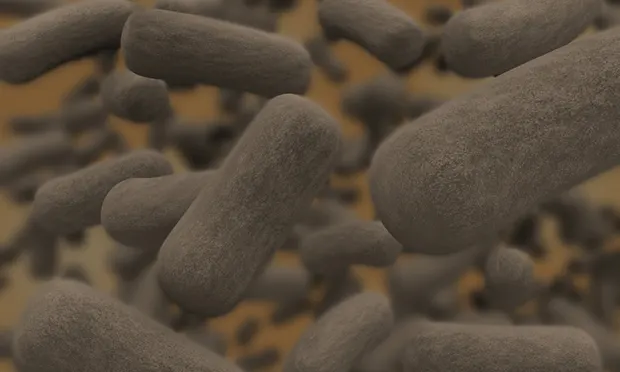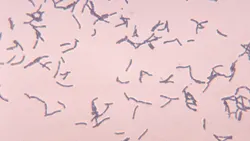Probiotics
Marcella D. Ridgway, VMD, MS, DACVIM (SAIM), University of Illinois

You have asked...How useful are probiotics in veterinary practice?
The expert says…
Many veterinarians currently recommend therapeutic probiotic administration for their small animal patients, particularly for management of acute or chronic diarrhea or as adjunctive therapy for patients on antibiotics. Although few studies have shown probiotic use as beneficial in modifying clinical disease, these benefits are often bacterial-strain and disease specific. Initial investigation of clinical efficacy of probiotic use in disease prevention and treatment in veterinary medicine is promising but preliminary.
What Are Probiotics?
Probiotics are live microorganisms which, when administered in adequate amounts, provide health benefits to the recipient. Related terms include prebiotics and synbiotics. A prebiotic is a food substance (eg, inulin) that is not digestible by the host but selectively fermented by gut bacteria to influence the composition or activity of the gut microbiome to favor beneficial bacteria. A synbiotic is a combination of prebiotic(s) and probiotic(s) administered concomitantly.
Related Article: Are Probiotics Reliable?
Why Use Probiotics?
Although there is not yet strong enough evidence to support specific health claims for probiotics, oral administration of live nonpathogenic organisms can result in improved GI health and immune system function, and growing evidence supports potential therapeutic benefits in diverse disease conditions (eg, chronic GI abnormalities, allergic disease, diabetes mellitus, obesity, liver disease, mood and behavior disorders).1-4 Human and rodent studies have documented gut microbiome alterations and imbalances in various disease conditions, prompting examination of the potential therapeutic benefit of manipulating the GI microbiome by probiotic supplementation.
Several human studies have indicated that probiotics may improve glucose tolerance, facilitate weight loss, reduce incidence or severity of atopic dermatitis, benefit patients with liver disease, reduce lipid levels in hypercholesterolemia, reduce inflammation, improve quality of life in humans with inflammatory bowel disease, reduce incidence of some diarrheal diseases, improve outcomes in ICU patients, decrease incidence of respiratory infection in day care (children), and reduce the occurrence of dental caries (children) and severe gingivitis (adults).1-5
Related Article: How to Treat Feline Inflammatory Bowel Disease
Probiotics have shown benefit in dogs and cats with acute or chronic nonspecific diarrhea and dogs with diet-associated diarrhea.6-10 Probiotic administration may:
Reduce inflammatory marker levels (but not clinical signs) in dogs with atopy.11,12
Improve growth rates and vaccine responses in puppies.13,14
Lower cholesterol in normal dogs and dogs with enteric disease.
Reduce numbers of fecal Clostridium spp, Staphylococcus spp, and Pseudomonas spp in dogs.
Reduce morbidity of FHV-1 infection.15
However, reduced signs and/or fecal shedding in dogs with giardiasis16 or azotemia in cats with chronic kidney disease17 have not been demonstrated. Probiotic-associated complications have not been reported in small animal patients; safety and ease of administration are additional characteristics which make probiotics appealing therapeutic agents.
For more, see commentary about probiotics from Dr. Colin Burrows.

How Are Probiotics Administered?
Probiotics are usually administered in fortified food products or as separate nutritional supplements containing freeze-dried organisms in capsule, tablet, or powder form. Appropriate dosing has not yet been fully evaluated; recommended doses are empirical. Probiotic preparations may contain a single or multiple probiotic species or may be administered in synbiotic form.
How Do Probiotics Work?
The mechanisms by which probiotics generate beneficial effects are largely undetermined. Initially, it was theorized that probiotic strains established themselves in the gut, displacing or inhibiting proliferation of harmful bacteria, which may account for some of the benefits of probiotic use. However, as the extreme complexity of the GI microbiome and its extensive interactions with gut epithelial cells, nervous system components, and immunocytes becomes better understood, a myriad of potential mechanisms becomes apparent.18,19
Gut bacteria serve many functions, including food product fermentation, digestion and nutrient absorption, vitamin synthesis, drug metabolism, interaction with cells for gut development and function, and host immune system modulation. Alterations in GI microflora secondary to illness, stress, antibiotic use, and dietary and/or environmental changes can disrupt GI homeostasis (the complex interrelationship of resident GI organisms and normal GI mucosal functions), which has far-reaching effects on host immune system and organ function. Probiotics may benefit affected individuals by acting at one or more points to initiate, enhance, or restore function to evoke a positive health effect.
How Are Probiotic Strains Selected?
Because health benefits derived from probiotic administration appear to be highly strain and disease specific, and underlying mechanisms are generally unknown, selecting a potential probiotic strain can be challenging (see Probiotic Candidate Characteristics). Veterinary probiotic research has focused largely on evaluating specific strains for retention of viability and function during product preparation and their ability to transiently colonize the gut. Future research must evaluate particular probiotics for effectiveness in promoting health or modifying various diseases.
Probiotic Candidate Characteristics
Isolated from same species as intended host
Nonpathogenic
Remain viable during large-scale production and storage
Survive transit through the GI tract (exposure to gastric acid, bile)
Adhere to and colonize gut epithelium
Show a beneficial effect on host
What Problems Are Associated with Probiotic Use?
Probiotic administration is generally considered safe. Risk for causing harmful infection through administration of live probiotic bacteria is a concern but occurs infrequently in humans; instances of probiotic-associated complications (eg, infection, sepsis) are relatively few and have occurred in individuals with compromised immune systems or with indwelling devices (see Disadvantages & Potential Risks).
Disadvantages and Potential Risks
Poor quality control or not monitored by the FDA
Inconsistent product quality
Properties are strain specific
Undefined clinical indications (disease state, probiotic strain)
Uncertain dose, frequency, and/or duration of treatment
Unknown mechanisms of action and interactions
Potential for transfer of drug-resistant genes
Potential for probiotic-strain infection or pathogenic colonization
Poor quality control is a concern with commercially available products.20,21 Three probiotic supplements for small animals have been appropriately labeled and contained the type and number of organisms claimed (see Products Meeting Label Claims). Some products studied contained no viable organisms. Lack of standardization limits probiotic research and may contribute to inconsistent and discordant results.
Products Meeting Label Claims
Proviable-DC (nutramaxlabs.com), synbiotic
FortiFlora (purina.com), Enterococcus faecium SF68
Prostora (iams.com), Bifidobacterium animalis
What Is the Future of Probiotics in Veterinary Medicine?
Probiotics show considerable promise for disease prevention and treatment. Future evidence-based studies should evaluate appropriate probiotic strains, dosing, and efficacy in diverse veterinary clinical conditions.
MARCELLA D. RIDGWAY, VMD, MS, DACVIM, is clinical associate professor of small animal internal medicine at University of Illinois College of Veterinary Medicine. Her special interests include hepatobiliary and infectious diseases. Dr. Ridgway completed a small animal internship, small animal internal medicine residency, and earned her MS at University of Illinois.